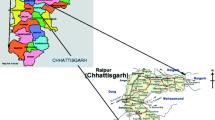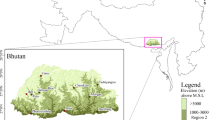Summary
The present study involves the use of Empirical Orthogonal Function (EOF) analysis/Principal Component Analysis (PCA) to compare the dominant rainfall patterns from normal rainfall records over India, coupled with the major modes of the Outgoing Long-wave Radiation (OLR) data for the period (1979–1988) during the monsoon period (June–September). To understand the intraseasonal and interannual variability of the monsoon rainfall, daily and seasonal anomalies have been obtained by using the (EOF) analysis. Importantly, pattern characteristics of seasonal monsoon rainfall covering 68 stations in India are highlighted.
The purpose is to ascertain the nature of rainfall distribution over the Indian continent. Based on this, the percentage of variance for both the rainfall and OLR data is examined. OLR has a higher spatial coherence than rainfall. The first principal component of rainfall data shows high positive values, which are concentrated over northeast as well as southeast, whereas for the OLR, the area of large positive values is concentrated over northwest and lower value over south India apart from the Indian ocean. The first five principal components explain 92.20% of the total variance for the rainfall and 99.50% of the total variance for the outgoing long-wave radiation. The relationship between monsoon rainfall and Southern Oscillations has also been examined and for the Southern Oscillations, it is 0.69 for the monsoon season. The El-Niño events mostly occurred during Southern Oscillations, i.e. Walker circulation. It has been found that the average number of low pressure system/low pressure system days play an important role during active (flood) or inactive (drought) monsoon year, but low pressure system days play more important role in comparison to low pressure systems and their ratio are (16:51) and (13:25) respectively. Significantly, the analysis identifies the spatial and temporal pattern characteristics of possible physical significance.
Similar content being viewed by others
Author information
Authors and Affiliations
Rights and permissions
About this article
Cite this article
Singh, C. Empirical Orthogonal Function (EOF) analysis of monsoon rainfall and satellite-observed outgoing long-wave radiation for Indian monsoon: a comparative study. Meteorol Atmos Phys 85, 227–234 (2004). https://doi.org/10.1007/s00703-003-0013-3
Received:
Revised:
Accepted:
Published:
Issue Date:
DOI: https://doi.org/10.1007/s00703-003-0013-3




